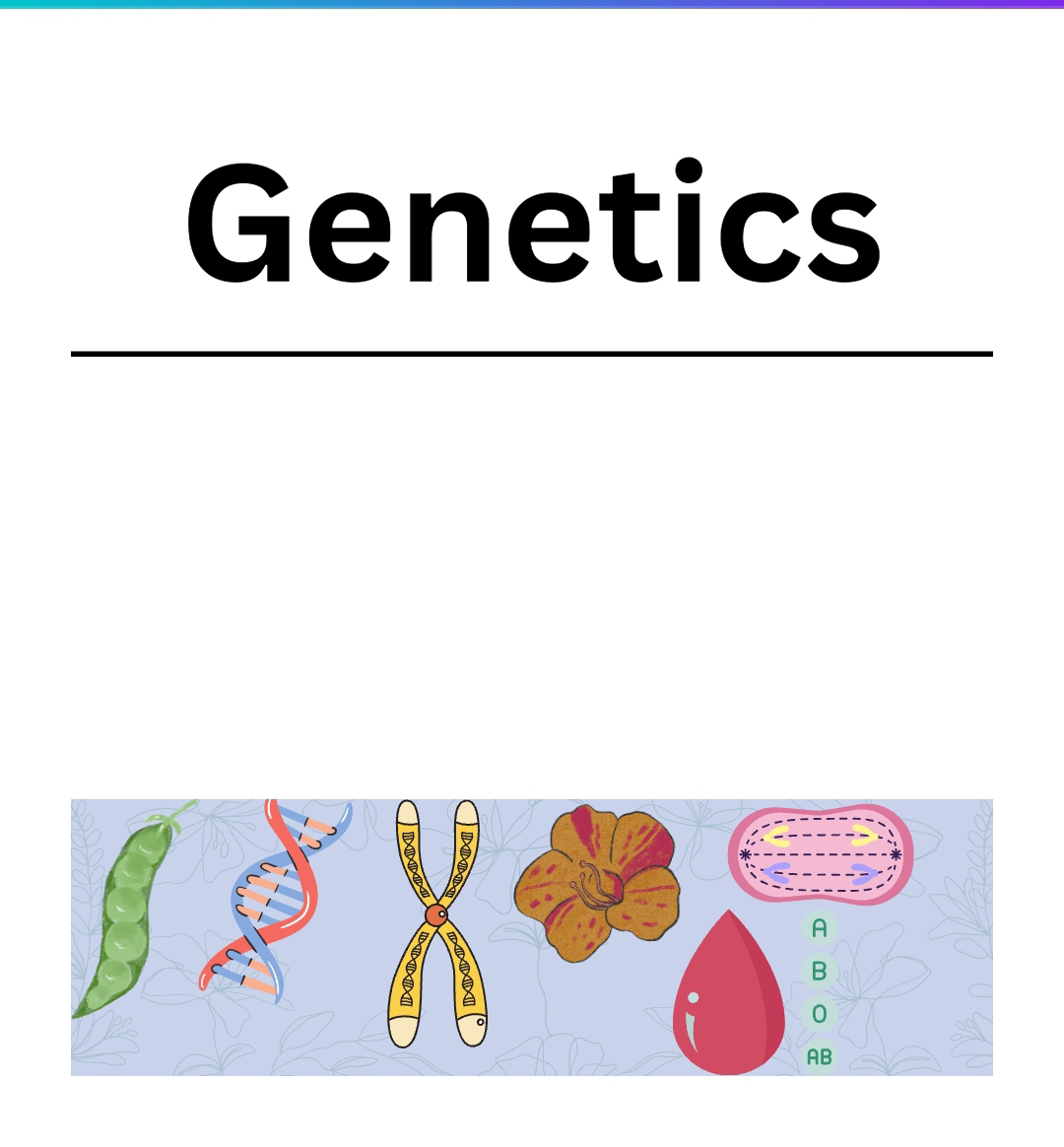Genetics: Mendel's law of inheritance topic of biology notes
The laws of Mendel, also known as Mendelian genetics, describe the basic principles of inheritance in organisms. They were formulated by Gregor Mendel, an Austrian monk and botanist, in the 19th century. Here's a brief overview of Mendel's laws with an example:
1. Law of dominance: According out of the two factors or alleles representing different traits of a character only one expresses itself in F1 generation is called dominant factor suppressing the other called recessive factor.
2. Law of Segregation: According to this law, an individual inherits two copies (alleles) of a gene, one from each parent. During gamete formation, these alleles segregate (separate) and only one allele is passed on to each offspring.
Example: Let's consider a flower color trait in pea plants. Mendel observed that when a purple-flowered plant (PP) is crossed with a white-flowered plant (pp), the first generation (F1) offspring all have purple flowers (Pp). This suggests that the purple allele dominates over the white allele.
3. Law of Independent Assortment: This law states that different genes assort independently of each other during gamete formation. In other words, the inheritance of one trait does not influence the inheritance of another trait.
Example: Mendel studied two traits in pea plants: flower color (purple or white) and seed texture (smooth or wrinkled). When he crossed a purple, smooth plant (PpSs) with a white, wrinkled plant (ppss), the F1 generation displayed a combination of the dominant traits (purple and smooth). In the F2 generation, however, the traits segregated independently, resulting in various combinations, such as purple-smooth, purple-wrinkled, white-smooth, and white-wrinkled.
These are the fundamental principles of inheritance that Mendel discovered through his experiments with pea plants. They laid the foundation for modern genetics and our understanding of how traits are passed on from one generation to the next.

